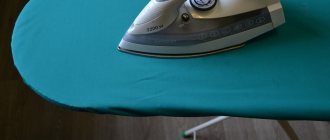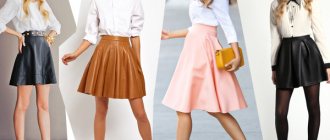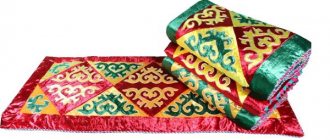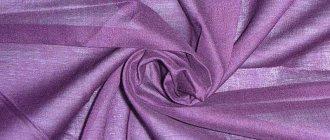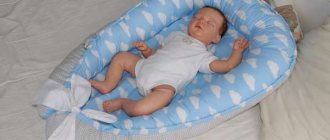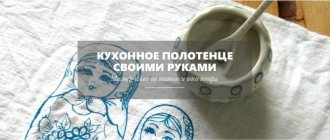Share on social media networks:
Nowadays, bedding items are quite expensive. Therefore, many take up the task of making them themselves, because in this case you can not only save money, but also decorate the interior at your own discretion, making it individual using inexpensive and simple means. Looking at photos of homemade pillows, for example, you might think that sewing them requires a lot of experience or innate skills. In reality, everything is much simpler. This article will help you with this, you will overcome all your fears, and as a result you will get a gorgeous pillow. You will need a minimum of time, effort, and available tools to understand how to sew a foam pillow and implement this idea.
What you need to make a foam pillow
To make a foam pillow, you will need:
- Tools - sharp scissors for cutting and trimming threads, pins for attaching the pattern and workpiece parts, a needle. If you have a sewing machine, the best solution would be to sew with it. When sewing by hand, special attention must be paid to the strength of the seams.
- Materials - threads, foam rubber for stuffing, fabric for covers and decorative pillowcases, thick paper for patterns.
You will need a sewing machine, thread and other materials and tools.
Important! It is not recommended to use too thick threads, as this will make the seams rough and too noticeable. And the use of thick threads will not affect the strength of the seam.
There is no need to use threads that are too thick.
The choice of fabric directly depends on the application of the item. If you plan to use it for practical purposes - sitting, lying down, then the fabric should be chosen that is durable and abrasion-resistant. Any material that is used for upholstery will do.
For pillows that will be used for lying down, use a durable fabric.
For decorative items there is more freedom in choice. You can sew decorative pillows from any suitable material that can hold its shape for a long time and matches the chosen design.
For decorative pillows, you can use any beautiful material.
How to choose pillow fabric?
To make pillows, it is recommended to purchase only natural fabric, because they should not only be beautiful, but also functional, and therefore pleasant to the skin.
Table No. 1. Types of fabrics for making pillows
| Fabric, illustration | Description |
| Cotton | This is the most suitable fabric for making a pillow base, because it does not cause allergies and has a fairly budget price. In addition, cotton material does not require any special care. |
| Silk | This is a very pleasant material that will be comfortable to lie on. By the way, silk pillows have a beneficial effect on the condition of hair and facial skin - they do not become electrified and do not leave “crumpled” marks. The only drawback is the difficulty of care - you need to wash silk delicately. |
| Linen | Pillows made from this fabric can be especially appreciated in hot weather, because linen has cooling properties. In addition, it does not require special care, is very pleasant to the skin, and hypoallergenic. |
| Wool | A pillow made of this material will come in handy during the cold season. At the same time, wool has not only warming, but also healing properties, but it requires special care - woolen products can only be washed in a washing machine on a special cycle. |
Important. Often, separate covers are sewn onto pillows, which can be removed and washed if necessary. They are made from various materials, we will look at the most popular of them.
Washing sofa cushions
Table No. 2. Popular fabrics used for sewing covers
| Fabric, illustration | Description |
| Batiste | This is a natural and at the same time very delicate material made of thin threads. It is often used to make pillowcases for children's pillows. |
| Teak | This is a very durable, natural fabric. Its main advantage is considered to be good wear resistance. |
| Satin | Durable material that better allows oxygen to pass through, making it useful to sleep on such a pillow. |
| Satin jacquard | Essentially this is the same satin, but with unusual decorative patterns. The material is characterized by good strength, wear resistance and at the same time has a truly noble appearance. |
| Percale | Durable fabric with a perfectly smooth surface. For greater strength, the threads are pre-treated with a special natural adhesive. |
| Twill | Dense fabric made from wool threads. Thanks to this pillowcase, the pillow looks voluminous. |
Separate covers are necessary not only for pillows, but also for upholstered furniture. You can read about how to sew stretch covers for upholstered furniture in our article.
Advantages and disadvantages of a homemade pillow
A hand-sewn pillow has a number of obvious advantages. Firstly, there is complete freedom in choosing the shape and decoration. You can independently select the height, degree of density and elasticity, and other indicators necessary for maximum comfortable use.
A handmade pillow can be made of any shape and size.
Secondly, things made with your own hands give the home comfort and warmth. And the proper use of hand-made items in the interior will help create the necessary accents and complement the chosen style of the room. Homemade pillows are perfect for Provence or country styles.
Homemade pillows fit perfectly into Provence and country styles.
The disadvantages of homemade sofa cushions include:
- the possibility of fabric abrasion and filling coming out due to incorrectly selected materials or weak seams;
- rapid loss of shape - if low-quality filler was used, or the pillow was not stuffed enough.
However, if you follow the sewing rules, these shortcomings can be easily avoided, and the item will please the eye for a long time.
If you choose low-quality material, the pillow will quickly wear out and lose its shape.
Rules for sewing a cushion for a sofa
When planning to sew your own cushion or cushion for a sofa, you need to remember a number of simple rules:
- Use a pattern to avoid wastage of fabric or other errors in calculations when cutting. If, if you have experience in sewing, a simple quadrangular “dumka” can be sewn by eye, then when sewing pads of complex shapes (letters, hearts), a pattern is required.
- In order for the pillow to keep its shape for as long as possible, it is advisable to sew an inner cover - a pillowcase or filling. This rule is especially true for foam pillows, since this material easily gets knocked down and clumps.
- Use only high-quality materials - strong, reliable threads, soft and non-clumping foam, fabric that can hold its shape.
The pillow should be sewn according to certain rules.
Note! There are many types of foam rubber available, which vary in degree of softness. In your work, it is advisable to use material marked “supersoft” or “soft”. As a rule, such filler is available in craft stores.
It is better to use soft filler.
What filler should I use?
All pillow fillings can be divided into two types: natural and synthetic origin. You should choose one option or another based on your preferences and capabilities.
Table No. 3. Natural fillers
| Filler, illustration | Description |
| Grass | The pillow can be filled with various plants, after drying them thoroughly. Use any medicinal herbs, including lavender, mint, chamomile. If you have an allergic reaction, you should exercise extreme caution when choosing a particular plant. |
| Animal origin (fluff, wool) | Down-filled pillows are considered the softest and most comfortable. Feathers are also used for such purposes, but then the products will be more rigid. The main disadvantage is that the pillows will have to be carefully looked after, otherwise they will quickly become infected with linen mites. In the case of wool, such problems will not arise, but after a while this filler will form into clumps and such a pillow will be unsuitable for further use. |
| Silk filler | This is a very soft and comfortable filler. The only disadvantage is the high cost. |
| cotton wool | This is the most budget-friendly of all possible fillers. With frequent use, such a product quickly loses its original appearance. |
Table No. 4. Fillers of synthetic origin
| Filler, illustration | Description |
| Sintepon | Lightweight filler with good wear resistance. |
| Comforel | An unusual filler that looks like lumps. Thanks to this texture, it retains temperature better, and besides, this type of pillow looks voluminous. |
| Holofiber | This is a soft material that does not emit foreign odors. In addition, it is hypoallergenic and fireproof. |
How to make a foam pillow with your own hands?
The step-by-step process of sewing a pillow is as follows:
- Preparing a pattern - you can make it yourself or use ready-made patterns from the Internet. Be sure to leave a seam allowance of at least 1.5 cm.
- Cut out the fabric for the cover and decorative pillowcase. The cutting process directly depends on the shape of the product. For example, for a roller, you should separately cut out a large flap for the main part and 2 small ones for the end parts. For a round pillow, two large circles of fabric with seam allowances are enough. If you plan to sew a circle consisting of segments, you need to cut out the required number of fabric triangles, which will then be sewn together.
- Directly sewing a cover, or, if it is not used, immediately a decorative pillowcase. To prevent the filler from coming out, the seams must be strong and reliable.
- Stuffing – the comfort of using the pillow depends on this stage. To prevent the foam from clumping inside, it is laid gradually, starting from the bottom. If sheet foam rubber is used, you need to fold the sheet 3 or 4 times and cut the blank to the shape of the future pad. After stuffing, it is recommended to check how comfortable it is on the pillow and remove excess.
Note! There is also an adhesive method for attaching foam rubber to a pillowcase. With this method, sheet foam rubber is laid directly on the cut fabric and secured in the middle with a glue gun. The cover is then sewn together. When using this method, the stuffing will bunch up less, and the item will retain its shape longer.
With the adhesive fastening method, the pillow retains its shape longer.
Prices: summary comparison table
| Pillow name | Characteristics | price, rub. | |||
| Size | Filler | Case material | Degree of support | ||
| Sleep Philosophy Contour Junior 7-18 years old | 30 × 50 × 8/10 cm | polyurethane foam 100% | cotton jersey | average | 2 588 |
| Brener Eco Green | 35 × 45 × 9.5/12 cm | polyurethane foam 100% | cotton 100% | average | 1 610 |
| Sleep Story | 30 × 50 × 8/11 cm | polyurethane foam 100% | knitwear | average | 1 905 |
| Dargez Tahiti | 30 × 50 × 13 cm | polyurethane foam 100% | polyester, microfiber fabric | average | 1 098 |
| Darwin Life 2.0 | 40 × 60 × 16 cm | polyurethane foam 70%, synthetic fluff 30% | thin knitwear, fabric – premium knitwear | average | 2 490 |
Decor pillows
There are many ideas for original sofa cushion decor. This applies to both the shape of the pillows and the decorative design itself. In addition to the classic quadrangular, the most popular shapes are:
- cushion - classic sofa headrest;
- a circle consisting of sectors - such a pad can be made in the shape of a flower;
- letters – letter pillows are often used as a decorative element in a children’s room;
- heart - sewn either from one piece of fabric, cut into two sectors, or from two or more types of fabric of different colors;
- other figures are pads in the form of flowers, animals, and other silhouettes.
When sewing, you can use either one type of fabric or combine several different colors or types of material. “Patchwork” pillowcases made from triangles or squares of different colors sewn together look impressive.
Pillows made from pieces of fabric look original.
When choosing decorative elements, you need to take into account the overall design and purpose of the pillow. For example, a bolster that will be used as an armrest or headrest on a sofa should not be overloaded with decor.
In some cases, the pillow should not be overloaded with decor.
Pillows that do not have a practical function can be decorated more boldly by using suitable elements - buttons, decorative appliqués, lace.
If you do not plan to lie on the pillow, it can be decorated with buttons or other voluminous decor.
For knitters
Decorative pillows do not have to be made only from textiles. Knitted covers deserve special attention. Of course, this option will require much more time, but the result is worth it.
Even if you are just learning to knit, feel free to take on making a cover. After all, there is absolutely no need to knit complex details with tricky decreases and increases. It is enough to knit 2 squares or rectangles according to the size of your pillow. In addition, decorative pillows 70 by 70 are very rare; usually their dimensions are much more modest.
Beginner knitters should choose simpler patterns, without a lot of yarn overs and crossed stitches. But experienced craftswomen can choose options with complex arans or weightless openwork.




